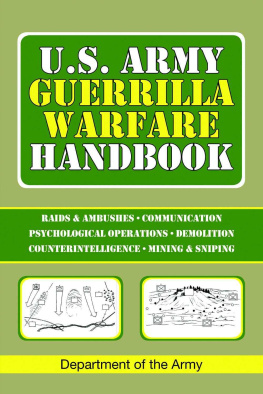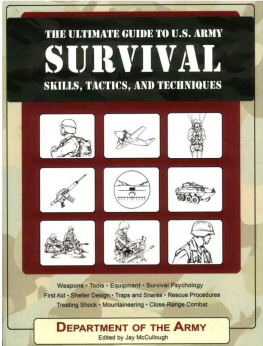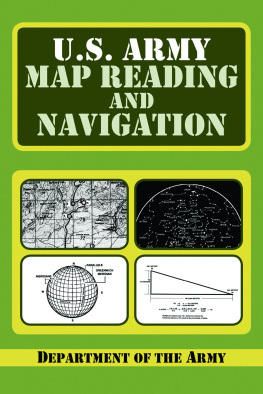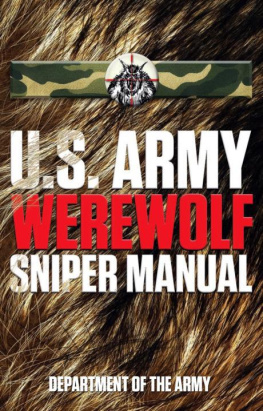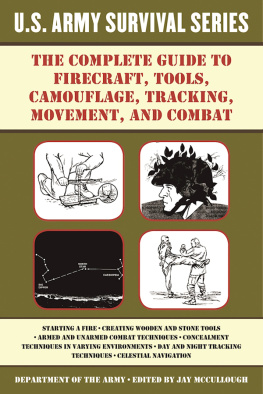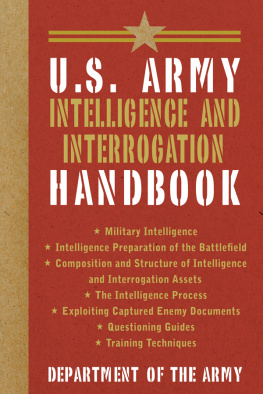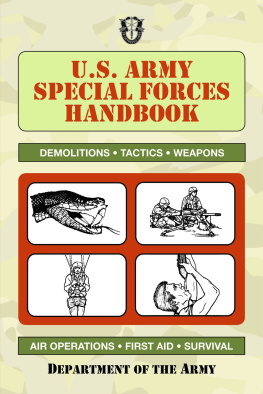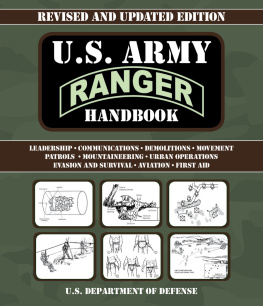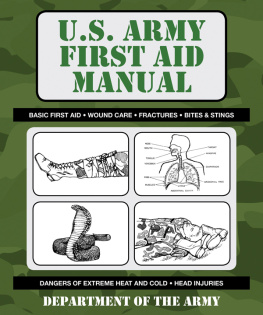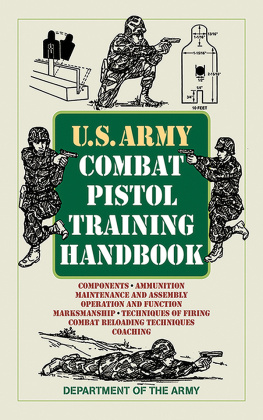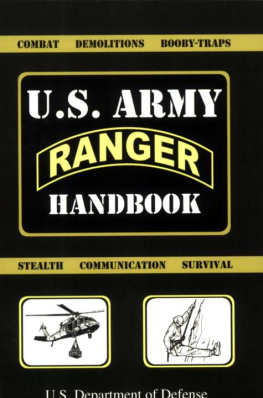Department of the Army - U.S. Army Guerrilla Warfare Handbook
Here you can read online Department of the Army - U.S. Army Guerrilla Warfare Handbook full text of the book (entire story) in english for free. Download pdf and epub, get meaning, cover and reviews about this ebook. year: 2009, publisher: Skyhorse Publishing, genre: Romance novel. Description of the work, (preface) as well as reviews are available. Best literature library LitArk.com created for fans of good reading and offers a wide selection of genres:
Romance novel
Science fiction
Adventure
Detective
Science
History
Home and family
Prose
Art
Politics
Computer
Non-fiction
Religion
Business
Children
Humor
Choose a favorite category and find really read worthwhile books. Enjoy immersion in the world of imagination, feel the emotions of the characters or learn something new for yourself, make an fascinating discovery.
- Book:U.S. Army Guerrilla Warfare Handbook
- Author:
- Publisher:Skyhorse Publishing
- Genre:
- Year:2009
- Rating:5 / 5
- Favourites:Add to favourites
- Your mark:
- 100
- 1
- 2
- 3
- 4
- 5
U.S. Army Guerrilla Warfare Handbook: summary, description and annotation
We offer to read an annotation, description, summary or preface (depends on what the author of the book "U.S. Army Guerrilla Warfare Handbook" wrote himself). If you haven't found the necessary information about the book — write in the comments, we will try to find it.
Department of the Army: author's other books
Who wrote U.S. Army Guerrilla Warfare Handbook? Find out the surname, the name of the author of the book and a list of all author's works by series.
U.S. Army Guerrilla Warfare Handbook — read online for free the complete book (whole text) full work
Below is the text of the book, divided by pages. System saving the place of the last page read, allows you to conveniently read the book "U.S. Army Guerrilla Warfare Handbook" online for free, without having to search again every time where you left off. Put a bookmark, and you can go to the page where you finished reading at any time.
Font size:
Interval:
Bookmark:

Copyright 2009 by Skyhorse Publishing, Inc.
All Rights Reserved. No part of this book may be reproduced in any manner without the express written consent of the publisher, except in the case of brief excerpts in critical reviews or articles. All inquiries should be addressed to Skyhorse Publishing, 555 Eighth Avenue, Suite 903, New York, NY 10018.
Skyhorse Publishing books may be purchased in bulk at special discounts for sales promotion, corporate gifts, fund-raising, or educational purposes. Special editions can also be created to specifications. For details, contact the Special Sales Department, Skyhorse Publishing, 555 Eighth Avenue, Suite 903, New York, NY 10018 or info@skyhorsepublishing.com.
www.skyhorsepublishing.com
10 9 8 7 6 5 4 3 2
Library of Congress Cataloging-in-Publication Data
U.S. Army guerrilla warfare handbook / Department of the Army.
p. cm.
Includes bibliographical references and index.
9781602393745
1. Guerrilla warfare--Handbooks, manuals, etc. I. United States. Dept. of
the Army. II. Title: United States Army guerrilla warfare handbook.
U240.U23 2009
355.4250973--dc22
2008051360
Printed in the United States of America
a . This manual provides guidance in special forces and unconventional warfare operations for commanders and staffs at all levels. The basic concepts of unconventional warfare are presented in a manner designed to acquaint the reader with special forces organization, concepts, and methods of operations to fulfill the Armys responsibility for the conduct of unconventional warfare.
b . Thorough understanding of the ideas established within this manual will prepare the commander and staff officers for subsequent decisions and staff actions which affect special forces planning and operations.
c . Detailed methods and techniques of special forces operations are discussed below. Classified information pertaining to all levels of special forces operations is found in FM 31-21A.
Unconventional warfare consists of the interrelated fields of guerrilla warfare, evasion and escape, and subversion against hostile states (resistance). Unconventional warfare operations are conducted in enemy or enemy controlled territory by predominately indigenous personnel usually supported and directed in varying degrees by an external source.
a. The responsibility for certain of these activities has been delegated to the service having primary concern. Guerrilla warfare is the responsibility of the United States Army.
b. Within certain designated geographic areascalled guerrilla warfare operational areasthe United States Army is responsible for the conduct of all three interrelated fields of activity as they affect guerrilla warfare operations.
c . The military operations of resistance movements are customarily supported and accompanied by political and economic activitiesboth overt and clandestineof individuals and groups integrated, or acting in conjunction with guerrillas. The several types of activities are interlocking. The term unconventional warfare is used in this manual to denote all of the United States Armys associated responsibilities in the conduct of guerrilla warfare. The term guerrilla warfare is used to denote the primary overt military activities of the guerrilla forces.
a. General. Resistance is the cornerstone of guerrilla warfare. Underground and guerrilla warfare stem from a resistance movement.
b. Definition. Resistance is defined as the act of opposition of one individual or group to another. A resistance movement is the organized element of a disaffected population which resists a government or occupying power with means varying from passive to violently active. Resistance movements begin to form when dissatisfaction occurs among strongly motivated individuals who cannot further their cause by peaceful and legal means.
c. The Nature of Resistance .
- Resistance, rebellion or civil war begins in a nation where political, sociological, economic or religious division has occurred. Divisions of this nature are usually caused by a violation of rights or privileges, the oppression of one group by the dominant or occupying force, or the threat to the life and freedom of the populace. Resistance also may develop in a nation where the once welcomed liberators have failed to improve an intolerable social or economic situation. Resistance can also be deliberately inspired from external sources against an assumed grievance. Resistance can be active or passive. Passive resistance may be in the form of smoldering resentment which needs only leadership or a means of expression to mature to active resistance.
- Some people join a resistance movement because of an innate desire to survive. Others may join the resistance forces because of deep ideological convictions. But all, regardless of initial motivation, are bound together to fight against a common enemy. Part of the population assists the resistance movement as fighters in the guerrilla force; some assist as part-time guerrillas or in civilian support agencies know as auxiliary units; while others are members of the underground.
d. Influencing Factors .
- Environment.
- ( a ) Terrain. The physical location of the resistance movement has a great influence upon its organization and tactics. Because they provide suitable areas for the security of operations, mountains, swamps, large forests or jungles nurture overt or guerrilla type resistance. Flat plains areas and large towns or cities are more apt to lead to underground resistance activities although the possibility of organizing a guerrilla force in these areas should not be overlooked.
- ( b ) Cultural. A peoples cultural environment also has its effects on resistance movements. The urge to bear arms, escape, and fight the enemy is dependent on the cultural background of the people. Men from rural or peasant environment, not subjected to tight governmental control, have more opportunity to show their hatred of the enemy occupation by overt and violent means such as guerrilla warfare. People from an industrialized and highly urbanized culture will resist with such activities as sabotage, propaganda, passive acts and espionage.
- ( c ) Control of population . When an occupying power is able to exercise close and stringent control over the population, the resistance movement is conducted primarily in secrecy. When the police and military forces of the occupying power are diverted or otherwise ineffectual, the resistance movement may be conducted with primarily overt guerrilla actions.
- Motivation . Besides the geographical and cultural environment influencing guerrilla warfare, the sociological climate produces many motivating factors which have a profound effect upon the resistance movement. Strong individual motivation is essential to the formation of a resistance force. Although some individual motives are not ideal and, if openly expressed, may do harm to the guerrilla effort, the following are examples of what some of the true motives may be.
Font size:
Interval:
Bookmark:
Similar books «U.S. Army Guerrilla Warfare Handbook»
Look at similar books to U.S. Army Guerrilla Warfare Handbook. We have selected literature similar in name and meaning in the hope of providing readers with more options to find new, interesting, not yet read works.
Discussion, reviews of the book U.S. Army Guerrilla Warfare Handbook and just readers' own opinions. Leave your comments, write what you think about the work, its meaning or the main characters. Specify what exactly you liked and what you didn't like, and why you think so.

